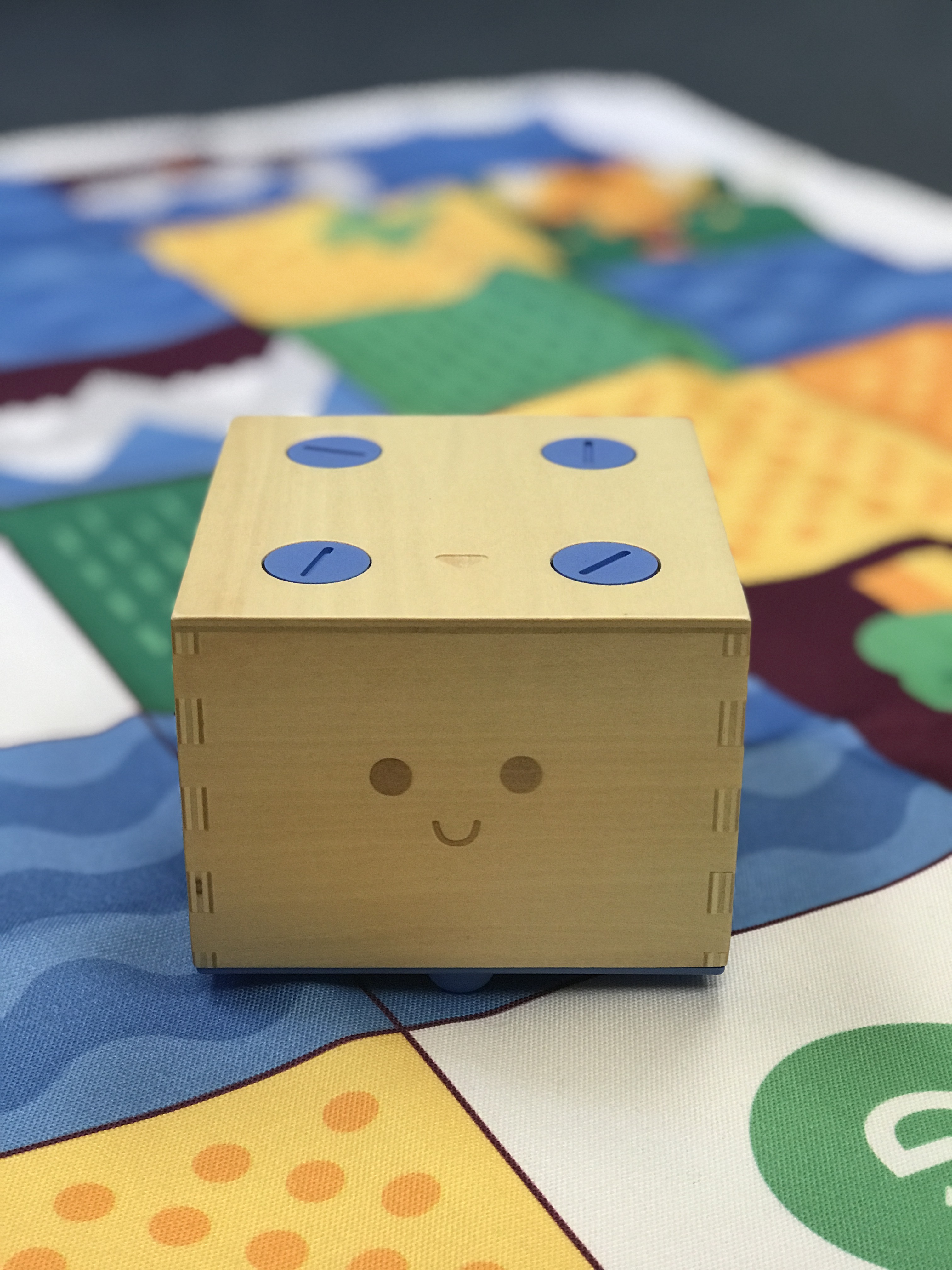
When four little children walk into the block room at the local pre-school, the first thing that grabs their attention is the colorful mat on the floor. One points out the mountains in one of the squares, another a large tree. The other two begin chatting excitedly about the bright orange castle.
Kelley Buchheister, an Assistant Professor in the Department of Child, Youth, and Family Studies, encourages them to talk about the different places on the mat as she reaches for a large cube with a friendly face. She introduces them to Cubetto, and gives a quick showing of his abilities. She encourages them to hypothesize what Cubetto will do when she presses a button. As he rolls across the mat on his own power with his charming little beeps, the children squeal and laugh and begin to make observations. Through trial and error, the children learn by investigating how to accomplish their goal of getting Cubetto to a specific square on the mat.
Cubetto is a little cube shaped robot that zooms around a large play mat. Giggles surround him as he turns left, then right, then moves all the way across the mat.
Children experiment by plugging a colored tile into a large rectangular “control board”. When they are satisfied with their set-up, they hit a button and watch as Cubetto follows the directions they programmed. It’s a tangible way to teach kids technology.
Buchheister specializes in stepping outside of the normal expectations of teaching to stimulate and challenge children to think and reason early through innovative techniques. Her research emphasizes mathematical play, thinking, and reasoning in early-childhood, teaching teachers how to build curriculum that helps children learn problem-solving strategies that they can continue to use later in life.
“We are trying to help teachers understand how to use technological tools to either document students’ learning or to enhance children’s problem-solving strategies and skills,” Buchheister said.
Currently, Buchheister’s research involves working with student teachers, showing them how to go through team planning, revising, and reteaching as they design pre-school math investigations that incorporate technology. This approach to lesson study provides a structure for the student teachers to reflect on the interactions they have with the children and examine how they have created opportunities that encourage children to think in different ways and develop skills that will serve them beyond a specific problem.
“We are trying to change their perceptions on what technology should look like in the classroom, instead of being at these extremes of ‘yes it’s great and we should incorporate it as much as possible’ versus ‘it’s terrible and we should never have it.’ We want teachers to be more strategic and purposeful in how they integrate technology into children’s learning experiences.”
Their goal? “Getting (teachers) to see that the technology itself shouldn’t solely lead the learning experience or situation, but that kids should be able to learn by problem-solving, thinking critically, and interacting or communicating in different environments—including those that incorporate technology.”
By helping teachers see the importance of using a problem-solving format instead of the traditional follow-my-example approach to teaching, Buchheister is removing the old arguments and creating a hybrid approach to teaching problem-solving skills.